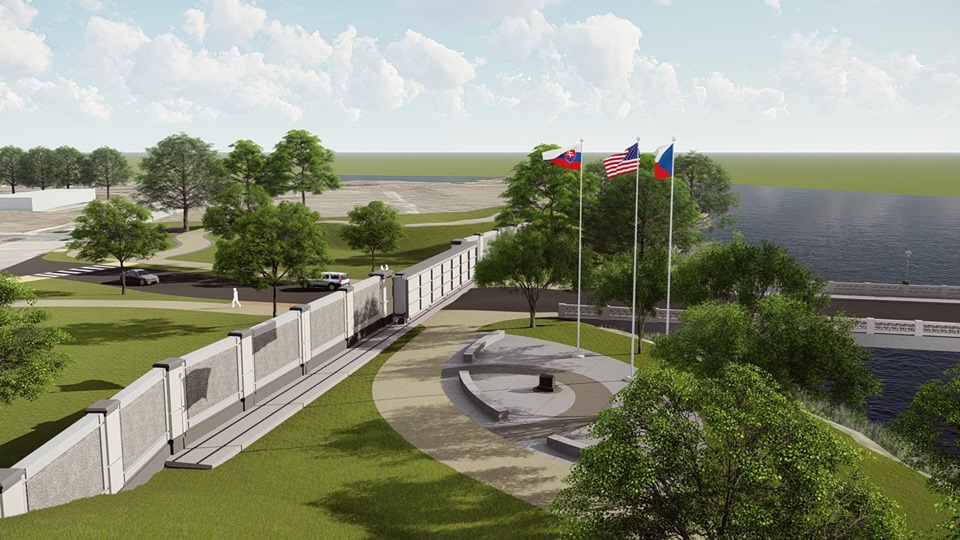Cedar Rapids Breaks Ground on Next Phase of Flood Protection

City, state, and federal leaders joined together in Cedar Rapids on the afternoon Tuesday, October 8th, for the groundbreaking ceremony of the floodgate to be placed on the southeast side of the 16th Avenue Bridge. The floodgate is a section of the entire project funded by the U.S. Army Corps of Engineers. With this floodgate at the 16 Avenue Bridge comes a retractable gate that rolls across the road and locks in 30 minutes to protect the New Bohemia business district when the river rises. The 4-foot thick gate will be 14 feet tall and 67 feet long and will stow behind a flood wall when not in use. This will make preparing for flood events much faster than plugging manholes and putting up HESCO barriers.
The city has already completed seven other flood control projects. One of them, that made the roller gate possible, is the Sinclair Levee System. The roller gate will seal off the bridge portion of the flood control system. The system also includes a four-acre detention basin along with a pump station, with an additional pump station over in Lot 44 between 8th Avenue and 12th Avenue.
Cedar Rapids Flood Control Program Manager, Rob Davis, says this station is critical to prevent rain and floodwaters from backing up into neighborhoods through the storm sewers. It also helps keep roads open during the flood events and heavy rainfall. This was a challenge both in 2008 and 2016. “We now can protect two-thirds of downtown with two storm sewer shut off gates. It’s not very visible, the underground fight was actually way harder for us in 2016 than it was with the above-ground fight,” said Davis.
There is still much work left to be done to complete the city’s seven mile flood control master plan. One of the biggest projects yet to take shape is the redesign of the 8th Avenue bridge.
Now that the Army Corps of Engineers is getting to work, Davis says he’s looking forward to accelerating the cities flood control projects. Work will soon begin in the downtown area to bolster the volume of water the system can protect against; Davis stated, “We’re going to build some permanent walls to a certain height and then put removable [walls] above that. We’re going to take into account an increase to the 100-year flood projections so that permanent walls … will be a good 10 percent above what the current 100-year flood is.”
The city will hold an open house on November 12th to show residents some of the updated renderings and work the city has done in preparation for future projects.
“The overall project that we’re building—a little over 3 miles of levee—it’ll protect all the way from the Cargill plant up passed McLoud Run on the north side of town,” explained Colonel Steve Sattinger, district commander with the U.S. Army Corps of Engineers Rock Island district.
The entire project funded by U.S. Army Corps of Engineers comes after years of collaboration between city, state, and federal leaders. Senator Chuck Grassley, Senator Joni Ernst, and Congresswoman Abby Finkenhauer sat with City leaders at Tuesday’s groundbreaking ceremony and shared their roles in the effort for to obtain federal funding.
“You see not only evidence in this project,” Sen. Grassley said, “But you see what has been done to revitalize from the damage that was done 11 years ago; and that is a community coming together.”
“I was here as part of the National Guard Mobilization for the flood incident in 2008,” said Senator Ernst, “So it was just really important to me to see this through to fruition and make sure that the people here in this community were protected. It had personal significance to me.”
Construction of the floodgate is set to start before 2019 comes to an end and is expected to be complete in late 2020.

